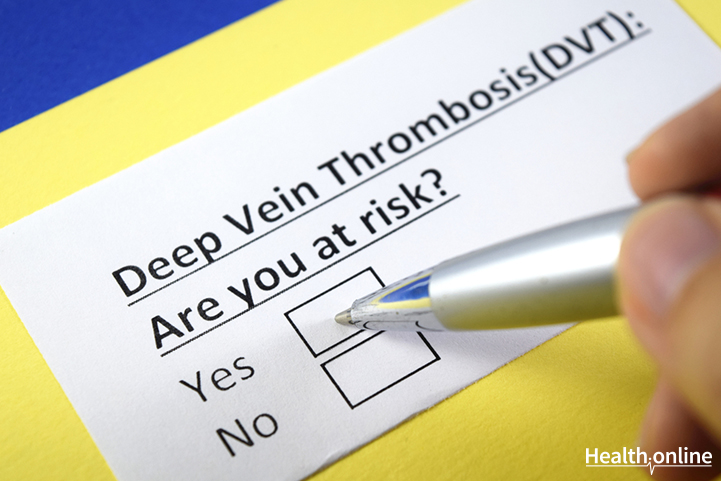
Causes & Risk factors of DVT
There are many different etiologies that result in the formation of deep vein thromboses. DVTs are often classified as: acquired or congenital. One of the most common causes of DVTs is the immobilization of the person for a prolonged period of time for e.g. while traveling long distances in an airplane, or other vehicle.
Patients who are immobilized post surgically and are not properly anti-coagulated may also develop DVTs. Anything that results in venous stasis because of obstruction of blood flow can result in the formation of DVTs.
Illnesses such as polycythemia rubra vera or thrombocytosis may result in increased viscosity of the blood. Thicker blood slows the flow and allows for the potential thrombus to form. Increased central venous pressure can also decrease the flow of blood within the veins of the lower extremities. Medical conditions that may result in increased central venous pressure include: neoplasms, pregnancy or congenital anomalies.
Mechanical injury to the vein may also result in DVT formation. The most commonly identified mechanical injury to a vein occurs with the insertion of PICC lines, which are lines used for longer term IV use and blood draws. The PICC line is most commonly inserted in the upper extremities, and the result may be an upper extremity DVT.
Anytime there is an injury to a vein, there is an increased risk of DVT development. However, whichever vein experiences the mechanical injury will be the vein at risk of DVT development.
Risk Factors Commonly Associated with DVTs:
The most commonly associated risk factor for the development of DVT is the patient having a past medical history of DVT. Other risk factors include: obesity, neoplasm, surgery, immobility, acute infection, and being over 75 years of age. Immobilization for more than 3 days may also increase the risk of DVT development. Because of the normal physiology of pregnancy, the central venous pressure increases, thus slowing blood flow, and creating an environment that allows for DVT formation.
The following medical conditions may also increase the risk of DVT development: stroke, myocardial infarction, sepsis, nephrotic syndrome, ulcerative colitis, trauma, spinal cord injury, burns, congestive heart failure, fractures of the lower extremities, lupus, behcet’s syndrome, homocystinuria and IV drug abuse.
Medical conditions that result in a hyper-coagulable state are also risk factors for DVT. Malignancy and blood-clotting diseases that result in a hyper-coagulable states can also increase the patient’s risk of developing DVT.
These hyper-coagulability may result from diseases that affect the following: deficiencies of anti-thrombin, protein C or protein S (which are normally responsible for lysis of clots); altered functionality of clotting factors V, VIII, IX, XI; and prothrombin. Factor V Leiden and Antiphospholipid Syndrome, for example, can result from these dysfunctions.
Hyper-coagulable states may also include: dehydration, estrogen pharmacotherapy, heparin-induced thrombocytopenia; and DIC from sepsis.




